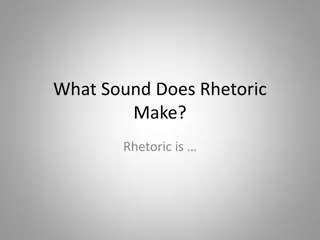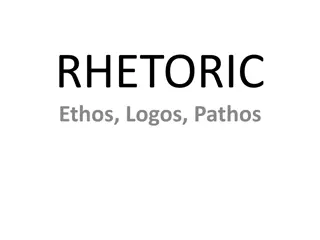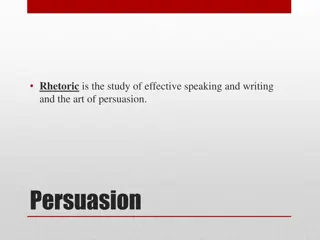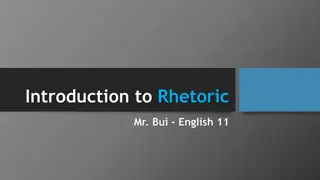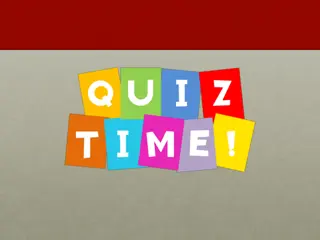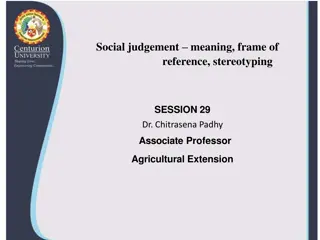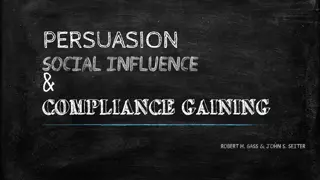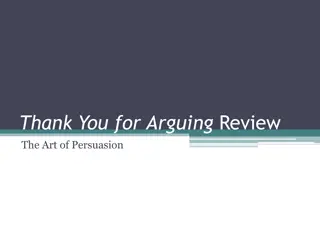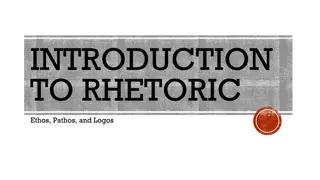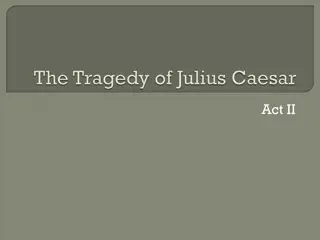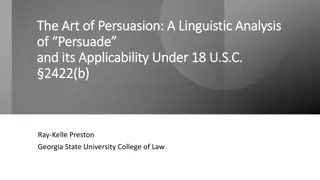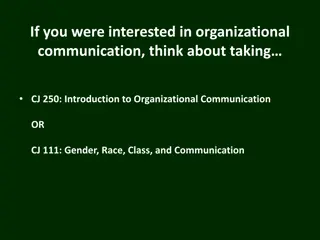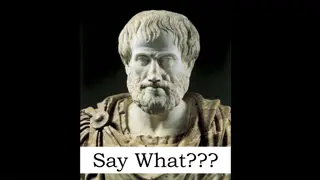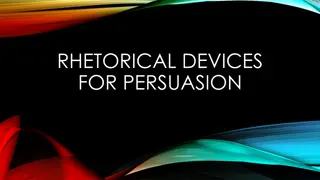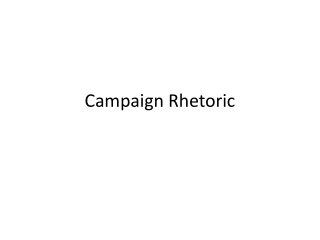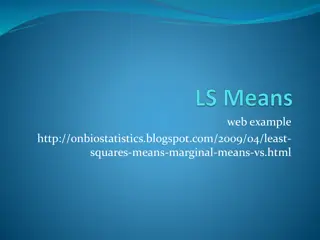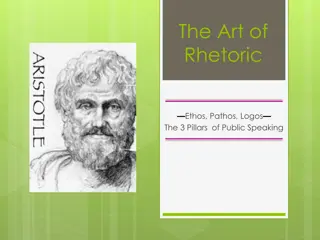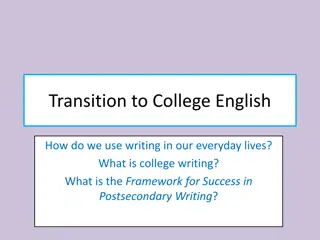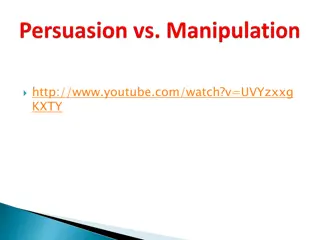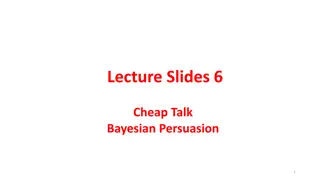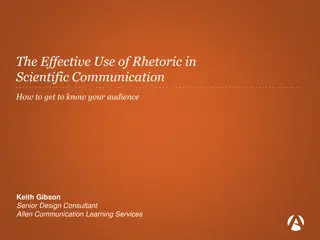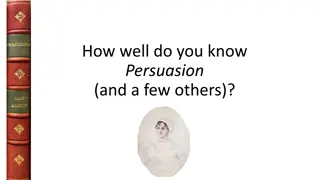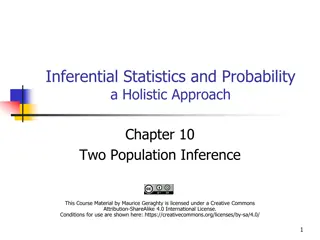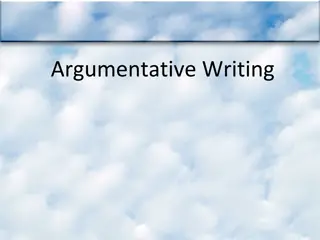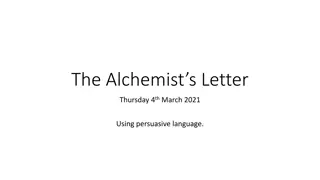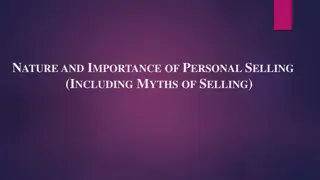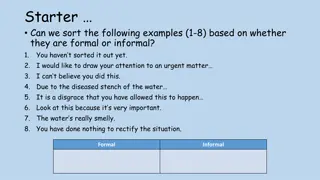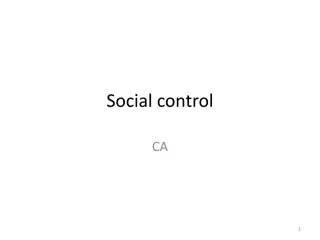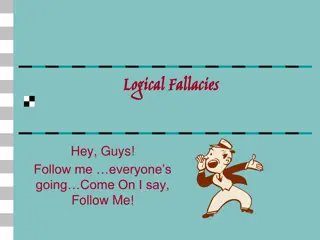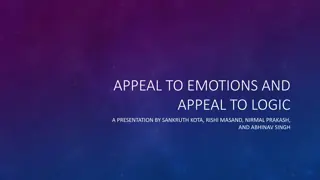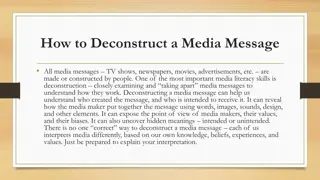Understanding Rhetoric: Aristotle's Three Means of Persuasion
Rhetoric, as Aristotle defined it, is the art of persuasion through available means. This involves utilizing logos (logic), pathos (emotions), and ethos (trustworthiness) to influence an audience. Writing serves various purposes like self-exploration, communication, entertainment, record-keeping, or persuasion, often blending multiple aims simultaneously. By identifying the primary purpose of writing and considering the intended audience, one can effectively adopt a rhetorical stance.
Download Presentation

Please find below an Image/Link to download the presentation.
The content on the website is provided AS IS for your information and personal use only. It may not be sold, licensed, or shared on other websites without obtaining consent from the author. Download presentation by click this link. If you encounter any issues during the download, it is possible that the publisher has removed the file from their server.
E N D
Presentation Transcript
So, we should begin by asking the question: What is rhetoric?
As defined by Aristotle, is the use of any available means to achieve persuasion In other words, making use of what you know and what is at your disposal to persuade an audience. This leads to another question
It can be given as the action or fact of persuading someone or of being persuaded to do or believe something. So, it means conveying information in a way that has the person at a point where they hear (or see) something you want them to believe and do believe/trust you.
Aristotle noted that there are THREE primary means of persuading someone Logos Pathos Ethos
These Greek terms roughly break down as follows (for our purposes) Logos this is persuasion via logic, reasons, and evidence Pathos this is an appeal to one s emotions and feelings Ethos this is the appeal (to your audience) of how much they trust what you have to say or your authority to comment on a matter
Looking now at Ch.5 of our text, it states that All writing has a purpose (55). It can be used in many different ways, to explore one s self, communicate to others, entertain, keep a record, and/or persuade (55). The fact is, there are often several of these purposes being applied at any given time, not simply one of them.
Always ask yourself what the primary purpose of what it is you are writing. If its an assignment, ask yourself what the primary purpose aims to achieve and which course you think will work best to achieve the aim of that assignment.
Ch. 6 of our text addresses the next element in taking a rhetorical stance audience. What this means is: who will read (or hear) what you are writing? (57).
Our text points out a simple text from your own mother: Pls. take chicken out to thaw and feed Annye. Remember Dr. Wong at 4. Simple right? Three tasks: thaw chicken, feed Annye, and go to doctor at 4
This is in fact more complex than it appears. There is compressed information here that only makes sense because it is communicated by the mother to her son/daughter. If you didn t know it was a text message, from a parent, you may read that with complete confusion.
What you choose to communicate and how is important to who is reading it. Would you send an email to someone who is grieving over a death when you could call? Would you use a text filled with IM language and send it to your grand parents?
Taking into account who your audience is or might be is important to choices we make in writing. It s not always the teacher. A skill that you will find invaluable is the ability to identify and properly address the audience before you and recognize the changes in method and what is accepted for that audience.
If Id told you that your writing assignment on Monday was for a 100 pt. grade and I was going to check it for grammar, clarity, etc., and you had till the end of the week, would you have turned it in on a loose piece of paper as you were walking out that day?
Moving ahead to Ch. 8, lets talk about Stance This is the attitude or position you take when you are writing about an issue. Take Miley Cyrus, how did you feel about her actions at last year s VMAs that was your stance after reading the article
When you read a work or something written by others, it is important that one be able to recognize there stance on an issue. We sometimes call this bias. Knowing this, how does it affect your impression of what they are saying? If a reader uncovers your stance on something, how will it affect their impression?


